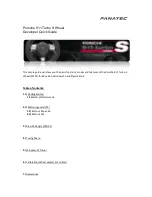
When you have fitted the M+S tyres:
X
Check the tyre pressures (
Y
page 337).
X
Restart the tyre pressure loss warning system
(
Y
page 339).
X
Restart the tyre pressure monitor
(
Y
page 341).
Information about driving with an emergency
spare wheel (
Y
page 348).
Snow chains
G
WARNING
If snow chains are fitted to the rear wheels,
they may scrape against the vehicle body or
chassis components. This could cause dam-
age to the vehicle or the tyres. There is a risk
of an accident.
To avoid hazardous situations:
R
never fit snow chains on the rear wheels
R
always fit snow chains in pairs to the front
wheels.
!
Vehicles with steel wheels: if you fit snow
chains on steel wheels, you may damage the
hub caps. Remove the hub caps from the rel-
evant wheels before fitting the snow chains.
For safety reasons, Mercedes-Benz recom-
mends that you use only snow chains that have
been approved for Mercedes-Benz or that are of
an equivalent standard of quality. For more
information, please contact a qualified special-
ist workshop.
If you wish to fit snow chains, please bear the
following points in mind:
R
snow chains cannot be fitted to all wheel/tyre
combinations. Permissible wheel-tyre combi-
nations (
Y
page 347).
R
use snow chains only if the road surface is
completely snow-covered. Remove the snow
chains as soon as possible when you come to
a road that is not snow-covered.
R
local regulations may restrict the use of snow
chains. Observe the appropriate regulations if
you wish to fit snow chains.
R
do not exceed the maximum permissible
speed of 50 km/h.
R
never use Parking Pilot when snow chains are
fitted (
Y
page 197).
You may wish to deactivate ESP
®
when pulling
away with snow chains fitted. This allows the
wheels to spin in a controlled manner, achieving
increased propulsive force (cut).
R
Deactivate ESP
®
(all vehicles except
Mercedes-AMG vehicles) (
Y
page 73)
R
Deactivate ESP
®
(Mercedes-AMG vehicles)
(
Y
page 73)
Information about driving with an emergency
spare wheel (
Y
page 348).
Tyre pressure
Tyre pressure specifications
G
WARNING
Underinflated or overinflated tyres pose the
following risks:
R
the tyres may burst, especially as the load
and vehicle speed increase.
R
the tyres may wear excessively and/or
unevenly, which may greatly impair tyre
traction.
R
the driving characteristics, as well as steer-
ing and braking, may be greatly impaired.
There is a risk of an accident.
Observe the recommended tyre pressure and
check the tyre pressure of all the tyres includ-
ing the spare wheel:
R
at least every two weeks
R
when the load changes
R
before embarking on a longer journey
R
for changed operating conditions, e.g. off-
road driving
If necessary, correct the tyre pressure.
G
WARNING
If you fit unsuitable accessories onto tyre
valves, the tyre valves may be overloaded and
malfunction, which can cause tyre pressure
loss. Due to their design, retrofitted tyre pres-
sure monitors keep the tyre valve open. This
can also result in tyre pressure loss. There is a
risk of accident.
Tyre pressure
337
Whe
el
s
and
tyres
Z
















































